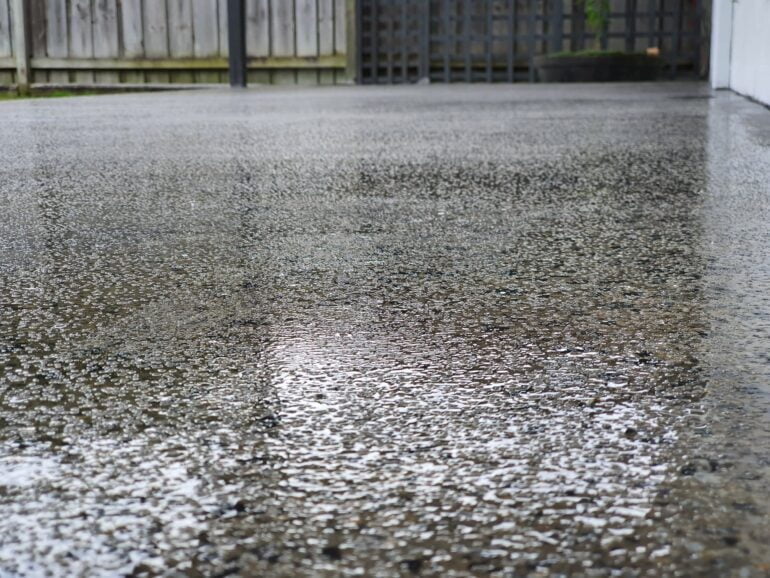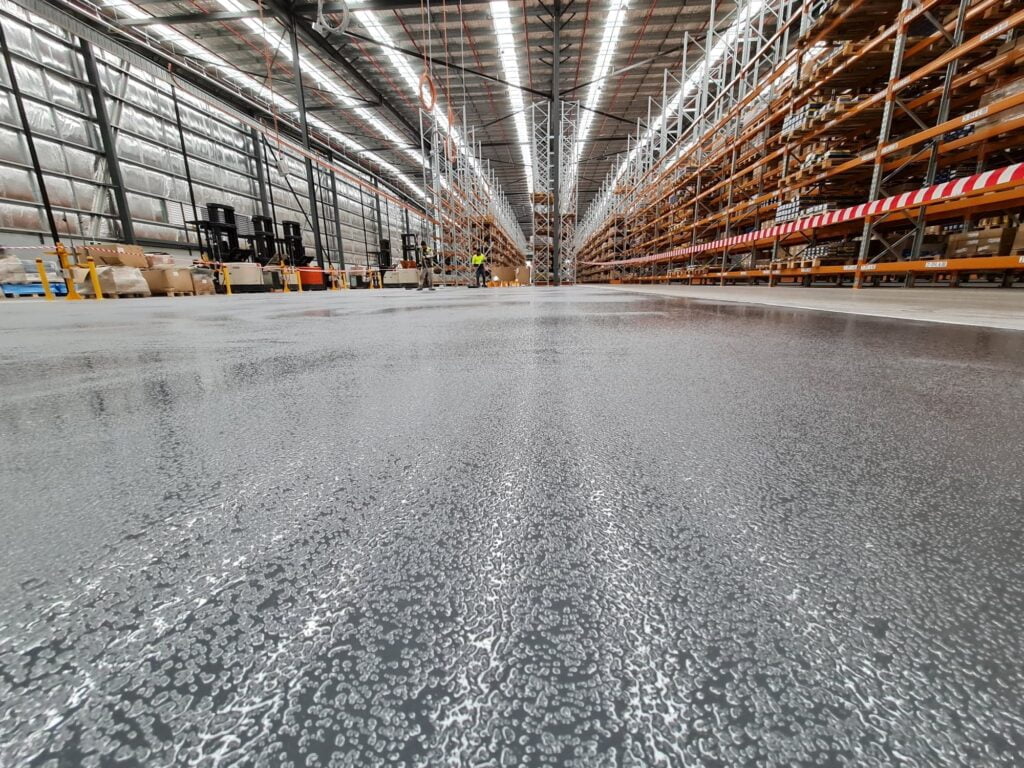
Should You Invest in Epoxy Flooring? Exploring the Advantages of Your Residence.
Epoxy floors have become increasingly popular among both households and companies who are looking for economical, fashionable, and long-lasting flooring options. This ground-breaking flooring solution has many advantages, both in terms of durability and visual appeal.
But do epoxy floors justify the cost? Residential epoxy flooring costs can vary depending on factors such as the size of the space, the type of epoxy used, and the complexity of the installation.
To assist you in making the best choice for your area, Escape Epoxy explores the benefits and factors to consider while installing epoxy flooring.
Epoxy Floors: Pros and Cons for Your Home
Do you intend to buy new flooring? Epoxy flooring is useful in a range of situations around the house. Epoxy is appropriate for usage on garage floors, basement floors, patios, kitchen flooring, and bathrooms.
But is epoxy flooring good for homes? Remax Infinity Management claims that this is the very reason epoxy coating has grown in popularity as a flooring alternative. But just like any other flooring option, using epoxy floors in your home has several significant benefits as well as drawbacks.
We’ll now go over the main benefits and drawbacks of epoxy flooring. Consider both the advantages and disadvantages before deciding if epoxy coating is the best option for your flooring requirements.
Pros: Long-lasting and reasonably priced

Affordably priced flooring solution
One of the key factors contributing to epoxy flooring’s popularity is its affordable cost. A concrete floor is all that is required for installation. You don’t need to be concerned about adhesive or underlayment.
In reality, polishing concrete is the only less expensive choice. Even when replacement costs are taken into account, epoxy is still less expensive than tile or solid wood even though it might not last as long.
The precise cost is influenced by the kind of epoxy that is utilized. Although water-based epoxy is less expensive than solvent- and solids-based epoxy, it is typically less durable.
Beyond pricing, though, each type has advantages and disadvantages. The cost also goes up when more layers are added.
Outstanding Durability
Epoxy flooring is resilient to a great deal of damage. They are not likely to be harmed by heat or most chemical spills. They hardly ever break or fracture when applied properly. These flooring can sustain harm from standing water, although the risk can be decreased by waterproofing them. Although scratching is possible, it can be avoided with a protective urethane layer.
Because of their resilience, they are well-liked in harsh settings including car dealerships, hospitals, and retail establishments. Home installations last much longer than commercial ones since they are not subjected to as much stress.
The kind of epoxy used also has an impact on how long the floor lasts; solvent-based epoxy is more durable than solids- and water-based epoxy. In general, an epoxy floor in a kitchen or basement can endure up to 20 years.
Customize your Preferences
While epoxy flooring offers practically infinite customization options, parquet and tiles have limited design alternatives. Opt for a metallic or flake epoxy flooring that imitates stone if you like more conventional designs.
You can choose from nearly any solid hue. Check out an abstract or geometric design for something more expressive. A 3D picture of lake bottom, cliff edge, or ocean waves will leave an impression on every visitor if you want an eye-catching floor.
Simple to maintain
To keep an epoxy floor clean and in good condition, all it takes is weekly vacuuming or dust mopping. Wet mopping removes material that has become embedded in the surface; nevertheless, remove any loose particles from the floor by using a dust mop or vacuum.
Next, apply a solution of 4 to 6 tablespoons ammonia in one gallon of hot water to a hard foam (sponge) or microfiber mop.
Vinegar, products with citrus extracts, and many detergents are examples of acidic cleaners to stay away from as they might etch the floor. Because they leave a slick behind, avoid using soap and other oil-based cleansers.
Cons: Difficult to Install and May Be Slippery
Takes Time to Install
Although putting an epoxy floor is technically easy, it does require careful preparation. It is preferable to leave the installation of an epoxy floor with a decorative pattern to a professional, even though you can do it yourself if it is a solid hue. Regretfully, it’s difficult to get experts who can install these flooring, particularly 3D versions.
To complete the task, you or your contractor must first seal any cracks in the concrete floor. After the repair work has dried, you must carefully clean the floor to get rid of any remaining oils or solvents. Only when the relative humidity is low enough for the epoxy to adhere properly can it be applied.
Later, the epoxy may peel due to an excessive amount of moisture on the floor. It can be challenging to reach that low humidity in basements and during the rainier months of the year. For epoxy to cure correctly, heated conditions are also necessary.
While the process will proceed properly when the temperature rises, cold can impede or even stop it.
The ammonia smell from the wet epoxy mixture may be considerable, depending on the kind you select. Low-VOC and odorless epoxy formulations make this less of a problem, but even they still emit some chemical vapors. Wear an N95 mask or similar mask with an organic vapor cartridge when working with wet epoxy to safeguard your health.
Once the epoxy has completely dried, which generally takes three days but might take up to four weeks, any smell will go away. For maximum endurance, the floor should ideally cure slowly.
Possibly Get Slippery
The non-porous seamless nature of epoxy flooring may make it slick, which is a potential drawback. This undesirable feature becomes apparent when your epoxy finish becomes greasy or damp.
However, some steps may be taken to reduce or eliminate the slickness of the flooring for a slight extra expense. These techniques include using silica sand on the finish or mixing aluminum oxide into the epoxy itself.
Easily Discolored
Compared to other typical flooring materials, epoxy is more prone to color issues. If you mix the hardening chemical and resin incorrectly before applying, the result may not be exactly the proper hue, and this is particularly possible if you do the work yourself. Unattractive variances in the floor may result from using two epoxy kits from different production batches.
If a finished floor is exposed to humidity and sunshine over time, the hardeners may become discolored. The floor’s usability is unaffected by the color shift, but in sunny or humid areas of the house, a UV-stable topcoat prolongs the floor’s appearance.
Epoxy flooring is sometimes disregarded for residential use, but if you’re looking for something reasonably priced, strong, and contemporary and don’t mind paying an expert installer, it’s a wise option. Beyond its usefulness, it also allows you to freely express your creativity and add a personal touch to any place you desire—be it your game room, home office, or bedroom.
The Pros and Cons of Epoxy Flooring
There are a lot of different kinds of flooring available these days. There are numerous options available to you, each with its advantages and disadvantages. Epoxy is used to make a common type of flooring.
The relative price, wide degree of customization, and excellent durability of epoxy flooring are its main advantages. However, this material’s drawbacks include a protracted drying period, a challenging installation procedure, and the potential for slickness in wet or greasy conditions.
In Conclusion
Epoxy flooring is an increasingly popular choice for both homes and businesses due to its affordability, durability, and customization options. It’s particularly useful in high-traffic areas like garages, basements, kitchens, and even commercial spaces.
While epoxy flooring offers benefits such as easy maintenance and long-lasting performance, it also comes with a few drawbacks, including installation complexity and the potential for slipperiness if spills occur.
However, by adding non-slip elements and UV-resistant topcoats, many of these issues can be mitigated. For homeowners and businesses looking for a flooring option that is cost-effective, stylish, and resilient, epoxy flooring can be a great investment.
Companies like Epoxy Flooring Brisbane specialize in providing tailored epoxy solutions, ensuring that customers receive professional installations and enjoy the full benefits of this versatile flooring option.
Whether you’re aiming for durability or a visually striking design, epoxy floors offer a modern, practical solution that enhances any space.

